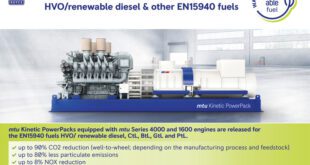Imagine an HVAC and water heating system which will save 20% to 50% on a building’s energy prices while minimizing CO2 and carbon emissions. Imagine a system that’s additional reliable, is 2.5 to 4 times a lot of economical, provides very cheap life cycle cost, and a high degree of design flexibility.
Where will you discover such a system? You wish look no any than right underneath your feet. The earth could be a huge energy storage device that absorbs 47% of the sun’s energy. When combined with the constant upward flow of heat from the earth’s red hot interior, the result is geothermal energy. Geo = earth, Thermal = heat. This clean, renewable energy is stored in lots of rock within the upper six miles of the earth’s crust. In nearly every state of the Union, there is sufficient geothermal energy to heat, cool and give hot water for all types and sizes of buildings.
Temperatures close to the world’s surface stay comparatively constant all year spherical – hotter than outside air in the winter, and cooler than outside air within the summer. Geoexchange systems (or ground coupled heat pumps) extract the world’s heat during the winter and unleash it to the building interior. In the summer the process is reversed, drawing the recent air from inside the building and transferring to the earth. Nearly all geoexchange systems available will also give low cost hot water – further increasing their operational efficiency
Consistent with the EPA and DOE, geoexhange systems are the most energy economical, environmentally clean and value-effective house conditioning systems available. They rate the systems forty% more economical than air supply heat pumps forty eight% greater than gas furnaces and seventy five% larger than oil furnaces. Though geoexchange units do need an influence supply, they have a abundant larger energy potency ratio. In heating mode, the system can move a minimum of 3 units of solar energy from the ground for every unit of electricity used.
There are 3 principal components in a geoexchange system: The bottom loop, the heat pump unit and the warmth distribution channel
Ground Loop
For most buildings, the connection to the geothermal heat source is created via a ‘closed’ loop configuration. A series of versatile, high-density polyethylene pipes are put in beneath the bottom in horizontal trenches or vertical holes. A fluid (water or a combination of water and environmentally benign antifreeze) is circulated through the loops, absorbing the planet’s heat because it passes through the pipes and transporting it to the geoexchange unit inside the building. In cooling mode, the building’s interior hot air is absorbed by the unit, transported back through the loops and absorbed into the surrounding earth. Post-installation the holes or trenches are backfilled, then coated with native landscaping, grass or even parking lots.
Horizontal trenching is sometimes the most cost effective configuration when adequate area is offered and trenches are straightforward to dig Vertical drilling is used when the land space is restricted, or where the soil is simply too shallow for horizontal trenching. The loops ought to be installed by professionals who follow procedures established by the International Ground Supply Heat Pump Association (IGSHPA), and are either certified by IGSHPA or can prove equivalent coaching by makers or different recognized authorities.
Geoexchange Heat Pump
The most commonly used unit is the only package water-to-air heat pump, that combines heat exchanger, refrigerant piping, management valve, compressor, air coil, and fan, in one single enclosure regarding the size of a little gas furnace. The one package design could be a major advantage over the “split” system used for air- supply heat pumps. There are several makers, brands and models of heat pumps available. They’re rated by the Air Conditioning and Refrigerant Institute per their respective Coefficient of Performance (heating) and Energy Efficiency Ratio (cooling). ENERGY STAR qualified geoexchange pumps consume 40-60 percent less energy than a normal heat pump.
Heat Distribution Channel
Standard ductwork is usually used to distribute heated or cooled air from the geothermal heat pump throughout the building. A well-designed geoexchange system permits building occupants precise temperature management by room or by zone, with ideal humidity levels. The system requires no flue or chimney. There is no rooftop equipment or chilling towers that add weight to the structure or limit different roof designs such as vegetated roofing. Their compact size requires significantly less interior storage space. The heated water coursing through the system can be used for added building uses, like heating swimming pools and spas, melting sidewalk and parking heap ice and snow- even providing water for a automotive wash!
The biggest industrial geoexchange system in the planet is the Waterfront Office and Galt East Hotel advanced in Louisville, Kentucky. This 1.7 million plus sq. foot advanced is fitted with a a pair of,700 ton capacity geoexchange system, at a cost of $one,five hundred per ton. The project manager estimates that a standard HVAC system with centrifugal chillers, cooling towers and insulated pipes would have price from $two,000 to $3,000 per ton. Using Geoexchange technology freed up concerning 25,000 square feet of further commercial space that may otherwise have been used for standard equipment rooms. Energy savings are estimated at $twenty five,000 per month while allowing individual temperature management to every room or suite. Annual maintenance costs are concerning 5 cents per square foot versus much higher average costs with normal HVAC systems.
Learn more about power 4 home. In order to save energy you should know about power 4 home. Click here for more information about power 4 home review.
 Alternative Energy HQ solar power for homes, wind energy, and bio fuel issues
Alternative Energy HQ solar power for homes, wind energy, and bio fuel issues






